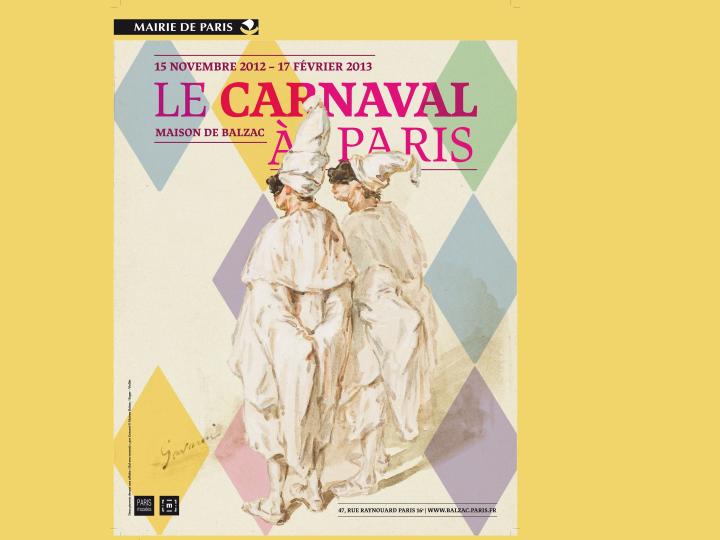Horaires : 10AM - 6PM
Plein tarif / Tarif réduit : -
Past Exhibitions
Du 15/11/2012 au 17/02/2013
Horaires : 10AM - 6PM
Plein tarif / Tarif réduit : -

The “promenade de boeuf gras” (walk of fat beef) gives the sense festivity. The majority of Parisians meet on the grand boulevards and train platforms to participate in the procession that follows the meal of Norman beef. The elegant pen of Gavarni immortalised, in vibrant colors, the masks that have inspired so many stories: who is hidden under a wolf? A charming heir; some grandmother had kept a wonderful line or her own aunt? Pierrot, Arlequin, and Polichinelle rubbed shoulders with newts, bears, bigwigs, Turks, troubadours, duchesses, milkmen, and boatmen of the Danube?
The artists evoke the supper, the carnival institution that dethroned lunch as well as dinner. We find ourselves in the villages surrounding Paris, where the wine is less expensive, to get drunk. More muted is the ambiance in Véfour or Véry, restaurants celebrated for the excellence of their cuisine, their high prices, and their private rooms, objects of numerous fantasies.
Public balls marked the spirits, and chief conductor of the orchestra Napoléon Musard “supreme master of dishevelled music” reached a veritable glory. He exceeded himself with the galop, the dance that closed the ball, and used it as a model to develop good humor and enthusiasm. Compared to a cavalry charge, the galop was on of the new “frenetic” dances like the polka, the cancan, the chahut-chat, that showed off the flexibility of its dancers.
The exposition invites its audience to relive a strong period in the life of the Parisian and of Balzac who could have written, “everyone knows that since 1830 the carnival in Paris has experienced a great development that rendered it more European and more burlesque than the wild carnivals of Venice.